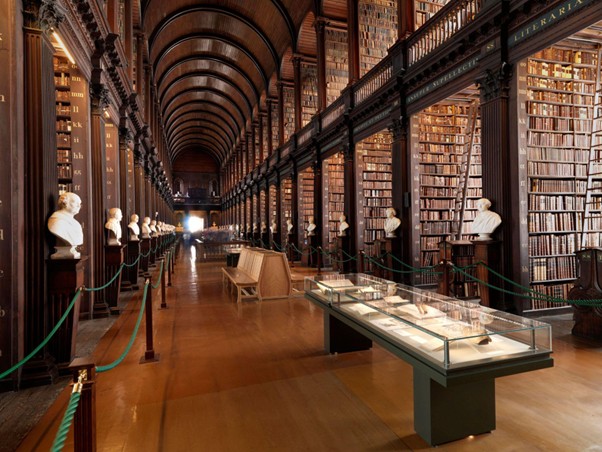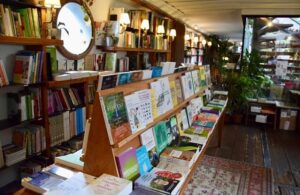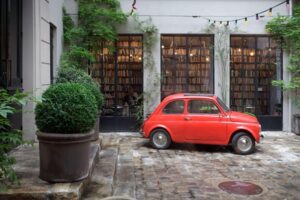Literary wanderlust: How the world’s most stunning book destinations are transforming modern travel

By Jeremy Liddle, Managing Director of Third Hemisphere, a full service marketing, PR, and public affairs agency with offices in Sydney, Melbourne, Singapore, HK, the US, EU, and UK
The travel industry’s best-kept secret is hiding in plain sight: extraordinary literary destinations that combine breathtaking architecture with authentic cultural experiences. Recent findings from the world’s largest literary venue survey, involving 200,000 participants across 54 international locations, reveal a profound shift in how travelers seek meaningful experiences beyond traditional sightseeing.
These aren’t your typical tourist attractions. From a 13th-century Gothic church transformed into a literary cathedral in the Netherlands to floating bookshops navigating European canals, these destinations represent a new era of travel where history, culture, and community intersect in ways that leave visitors fundamentally changed.
The data suggests something remarkable: in our increasingly digital world, travelers are actively seeking physical spaces that offer what technology cannot replicate, genuine human connection, architectural authenticity, and the irreplaceable experience of discovering stories within stories.
Ancient buildings, modern pilgrimages
The most captivating literary destinations transform historically significant architecture into contemporary cultural experiences that no modern construction could match. Boekhandel Dominicanen in Maastricht exemplifies this transformation, where visitors climb stairs embedded with books to reach a café within soaring vaulted ceilings and original medieval frescoes of a restored 13th-century Gothic church.
Trinity College Dublin’s famous Long Room stretches 65 meters through corridors that consistently draw comparisons to fictional magical libraries. Housing rare manuscripts including the 9th-century Book of Kells, this destination operates seven days weekly, accommodating both scholarly researchers and cultural tourists who come seeking experiences that blend academic gravitas with visual wonder.
The theatrical grandeur of El Ateneo Grand Splendid in Buenos Aires demonstrates how entertainment venues can find remarkable second lives. This converted 1919 theater maintains its ornate viewing boxes as intimate reading spaces while the original stage serves as a café offering panoramic views of elaborate architectural details that once witnessed countless performances.
Religious architectural conversions appear particularly successful across European contexts. The Abbey Library of St. Gallen in Switzerland, founded by an Irish monk in 612, maintains its monastic collection within gleaming wooden interiors and original ceiling frescoes that have survived over a millennium. Austria’s Admont Abbey Library, completed in 1776 as the world’s largest monastic library, creates experiences so magical they inspired Disney’s Beauty and the Beast library design.
These transformations prove that the most memorable travel experiences often emerge from unexpected places, spaces where centuries of history provide backdrops for contemporary cultural engagement that no theme park or manufactured attraction could replicate.
Floating literature and canal culture
Innovation in literary travel extends to completely unconventional spaces that utilize underexploited urban infrastructure. Word on the Water operates from a permanently moored barge on London’s Regent’s Canal, creating a floating bookstore atmosphere that feels simultaneously cozy and adventurous, with eclectic furniture, charming details, and potted plants creating the sense of visiting a beloved friend’s floating home.
Paris extends this waterway concept through Péniche L’Eau et les Rêves on Canal de l’Ourcq, where specialized botanical publications are housed within greenhouse-like interiors featuring glass walls and abundant plant life. The barge setting provides canal views while creating an environment where literature and nature merge in ways that landlocked bookstores simply cannot achieve.

These floating venues demonstrate that successful literary tourism doesn’t require expensive prime real estate locations. Instead, they show how creative space utilization can reduce operational costs while creating distinctive experiences that differentiate cultural offerings from mainstream entertainment options available elsewhere.
The waterway approach activates previously underutilized urban spaces while providing unique community amenities that serve both residents and visitors. Extended operational flexibility allows these venues to accommodate diverse programming throughout weekly cycles, from morning coffee and reading sessions to evening poetry performances and writing workshops.
Canal-based literary programming creates authentic local experiences that cannot be found in other major cities competing for cultural tourism markets. The success of these innovative venues suggests significant untapped potential within urban waterway networks for additional cultural tourism development that serves both community engagement and visitor experience objectives.
The economics of literary wanderlust
Consumer behavior analysis reveals that successful literary destinations maintain sophisticated operational strategies extending far beyond traditional retail hours. Market leaders demonstrate average weekly operations of 72 hours compared to conventional bookstore standards of 56 hours, indicating strong traveler demand for extended accessibility that accommodates diverse international visitor schedules.
Revenue diversification strategies reduce dependency on single income sources while maximizing traveler engagement opportunities. Minoa Pera in Istanbul combines 45,000-title inventory with full café operations, stationery retail, and home décor merchandise while extending weekend hours to midnight, creating comprehensive cultural experiences that encourage extended visits and deeper local engagement.
Multi-service integration appears consistently across top-performing destinations. The Used Book Café at Merci in Paris offers browse-while-dining experiences featuring seasonal menu items from breakfast croissants to hearty pumpkin soup, while Cafebrería El Péndulo in Mexico City operates two-level configurations with restaurant-style upper floor dining that captures both morning commuter traffic and evening entertainment markets.

Event programming provides additional cultural authenticity while generating community connections that extend beyond transactional relationships. Shakespeare and Company in Paris maintains literary events programming that complements its English-language book retail, while venues like Boekhandel Dominicanen host cultural events including readings and live music performances that allow travelers to experience local literary culture alongside resident communities.
The 1000 Libraries survey data indicates strong international correlation between venue authenticity and traveler satisfaction, suggesting that literary tourism’s appeal lies not in manufactured attractions but in genuine cultural experiences that connect visitors with local communities through shared appreciation for books, architecture, and authentic hospitality traditions.
These literary destinations prove that the most revolutionary travel experiences often come from following curiosity rather than guidebooks. Whether exploring medieval churches converted to bookstores, discovering floating literary havens on urban canals, or experiencing local café culture through book-centered gathering places, these venues offer travelers authentic cultural immersion that creates lasting memories and genuine connections with communities around the world.
The comprehensive findings from 1000 Libraries provide culturally curious travelers with unprecedented insights into destinations that combine architectural beauty, literary culture, and authentic local experiences in ways that traditional tourist attractions simply cannot match, representing a new frontier in meaningful travel that nourishes both mind and spirit.


